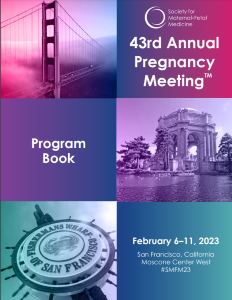Category: Operative Obstetrics
Poster Session I
(182) The association between the indications for Cesarean delivery and surgery time.
Study Design:
We conducted a retrospective cohort study, in a single tertiary university-affiliated medical center (January 2011- April 2022). The study group consisted of all women who underwent CS that lasted more than 90 minutes. Data were compared to CS with operating time of < 90 minutes Their demographic, obstetric, and surgical characteristics were compared.
Results:
1) During the study period, 31660 CS were performed in our center. Of them, 1410 (4.66%) lasted more than 90 minutes.
2) The rates of urgent CS did not differ between the two groups (48% vs 50.1%, p=0.136). [Table 1]
3) The indication for CS was associated with the surgery time. In the study group, there was a lower rate of malpresentation (8.8% vs 19.2%, p< 0.001); nonreassuring fetal heart rate (NRFHR) (8.9% vs 15.5%, p< 0.001); and patient request (2.1% vs 4.4%, p< 0.01) and higher rates of previous uterine scar (48.7% vs 28.2%, p< 0.001) and abnormal placentation (3.5% vs 1.5%, p< 0.001).
5) After applying a multivariate analysis: abnormal placentation, previous uterine scar, and preterm delivery were found to be associated with prolonged surgical time. Cesarean delivery due to arrest of labor, NRFHR, multiple gestation, and patient request were found to be protective factors. [Table 2]
Conclusion:
The main risk factors associated with additional surgery time in CS are abnormal placentation, previous uterine scar, and preterm delivery.
- DG
Daniel Gabbai, MD
School of Public Health, Tel Aviv University
Tel Aviv, Israel, Israel - YY
Yariv Yogev, MD
Lis Maternity Hospital, Department of Obstetrics and Gynecology, Sourasky Medical Center, Tel Aviv University
Tel Aviv, Israel, Israel - AL
Anat Lavie, MD
Lis Maternity Hospital, Department of Obstetrics and Gynecology, Sourasky Medical Center, Tel Aviv University
Tel-Aviv, Israel, Israel .jpg)
Emmanuel Attali, MD
Lis Maternity Hospital, Department of Obstetrics and Gynecology, Sourasky Medical Center, Tel Aviv University
Tel Aviv, Israel, Israel

.png)
